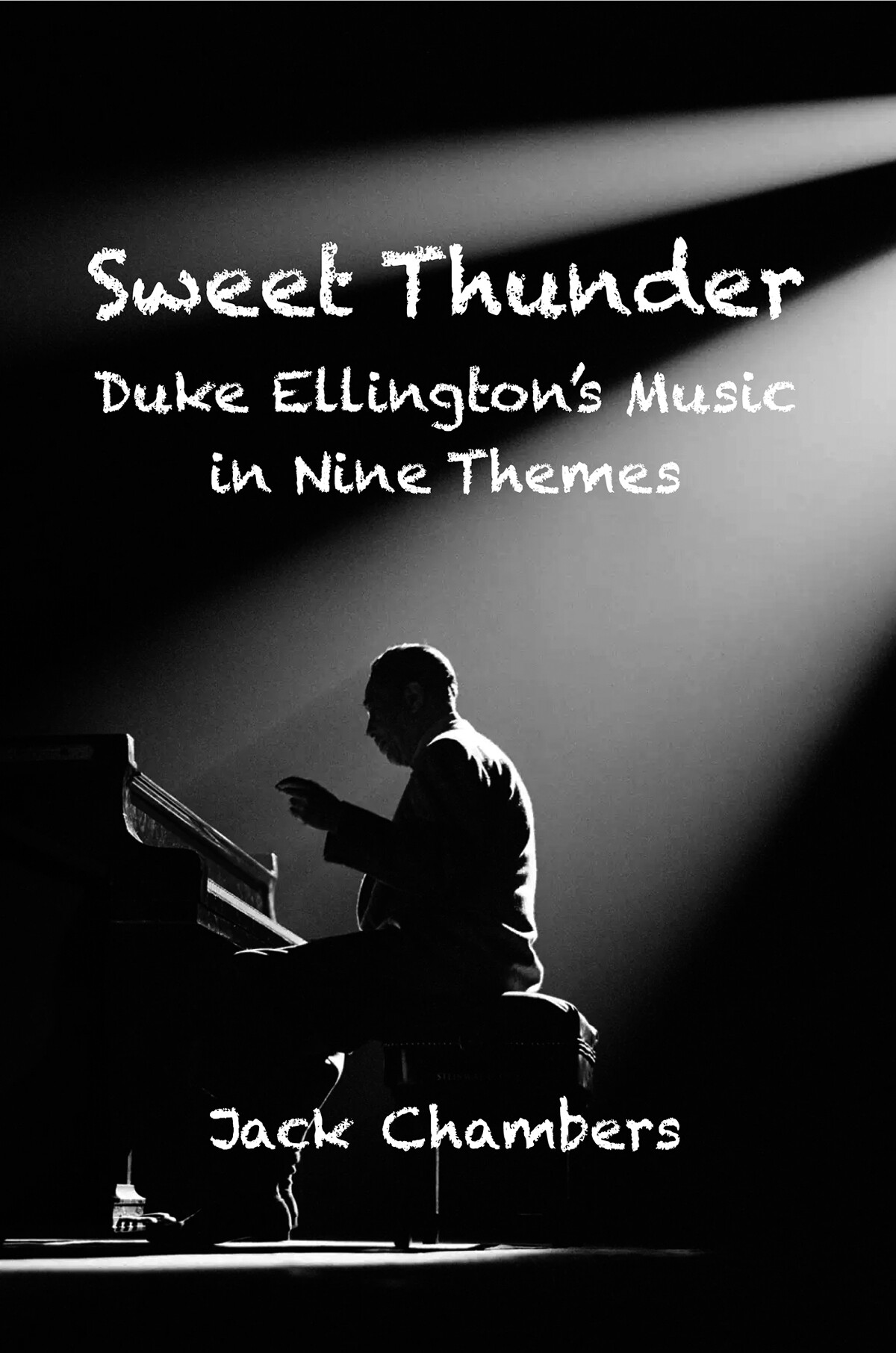 Duke Ellington has inspired a unique devotion among his most ardent fans. In contrast to many cults built around music legends the Ellingtonians are focused on studying his nearly inexhaustible musical output rather than separating biographical fact from fiction. This musical rather than narrative focus, and the artistic aspirations of Ellington’s greatest works make coming to grips with him a unique challenge for the jazz enthusiast.
Duke Ellington has inspired a unique devotion among his most ardent fans. In contrast to many cults built around music legends the Ellingtonians are focused on studying his nearly inexhaustible musical output rather than separating biographical fact from fiction. This musical rather than narrative focus, and the artistic aspirations of Ellington’s greatest works make coming to grips with him a unique challenge for the jazz enthusiast.
Jack Chambers has found in this book an inspired way to further inform the most arduous students of Ellington while also explaining him to the uninitiated. The nine chapters, described in Ellingtonian fashion as themes, are stand alone essays. Chambers has edited them for print, drawing on twenty years of oral presentations he made at meetings of the Toronto Duke Ellington Society.
The chapters may be read in any order and overlapping content is kept to a minimum. For those who do read straight through there is somewhat of a natural arc from the most biographical theme at the beginning of the book to the exploration of a late life effort at the end of it. Each section includes a chronological “playlist” of recordings referred to in the chapter as well as further references and useful supplementation.
In his introduction Chambers discusses the importance of Ellington as the last great composer of American music without words. Popular music from the 1950s on being an almost exclusively lyrical affair he makes an argument that the non-lyrical nature of most of Ellington’s legacy presents a barrier to young listeners. I found this line of thought interesting even if I personally find other factors more compelling.
The first theme by which Ellington’s music is approached is “Harlem“. The idea of Harlem is used both as a stage to chronicle Ellington’s early career and cited as a muse that found its way into various recordings. All the Ellington compositions with Harlem in the title are discussed at length. A particular focus is given to “Harlem Airshaft” to illustrate the inspiration Ellington drew from the sounds, textures, and tones of lived experience.
The next two chapters consider the use of instruments in Ellington’s band. In the first the use of plunger mutes by key Ellington sideman is explored with passages and recordings cited. The second follows the late introduction into the band of tenor saxophone as a solo instrument. Several years after it had become a standard in other top groups. Chambers introduces the men who filled that chair over the next several decades. In addition to musical analysis these two chapters provide a primer on the evolving membership of the band, even going into some sidemen’s careers outside of Ellington’s orbit.
The next chapter, subtitled “the Spectral Alliance of Johnny Hodges and Billy Strayhorn”, follows the collaborations of the two men. It also serves as a narrative bridge to the later years of the band if you are reading the chapters consecutively. Their personalities and Ellington’s are highlighted to demonstrate how temperament finds its way into artistic output but never gets hung up on biography.
The chapter titled “Panther Patter” highlights Ellington’s relationship with the piano and appearances as a solo pianist. Another chapter explores “The Stockpile” a treasure trove of recordings made at impromptu studio bookings, live shows, and elsewhere. “The Stockpile” continues to provide new releases of material dating from the mid fifties though the early seventies.
“Bardland” looks into Ellington’s accompaniments for Shakespeare and the several performances of the suite he titled “Such Sweet Thunder”. This covers the same period as the 1956 Newport Jazz Festival and the subsequent rebirth of Ellington’s career.
“Afro-Eurasian Ellington” concentrates on works inspired by the incessant world traveling Ellington began after overcoming a strong fear of flying. The chapter harkens back to the “Harlem Airshaft” discussion in chapter one and the unique way visual and audio stimuli influenced Ellington’s work. Unlike many jazz artists at the time he didn’t attempt to directly incorporate “world music” despite finding it profoundly inspirational.
The closing chapter discusses the creation of Ellington’s late career ballet titled “The River”. Following the development of various arrangements is a bit of a maze, but as Chambers notes, it serves to illustrate the hectic pace Duke Ellington was keeping in his final years.
Sweet Thunder is a must have for lifetime students of Duke Ellington and an approachable entry point into his musical legacy for those uninterested in a typical biography.
Sweet Thunder: Duke Ellington’s Music In Nine Themes by Jack Chambers
Paperback, 358 pages, July 2019, Rapido-Books Inc., ISBN – 10:199905850X
Joe Bebco is the Associate Editor of The Syncopated Times and Webmaster of SyncopatedTimes.com






















